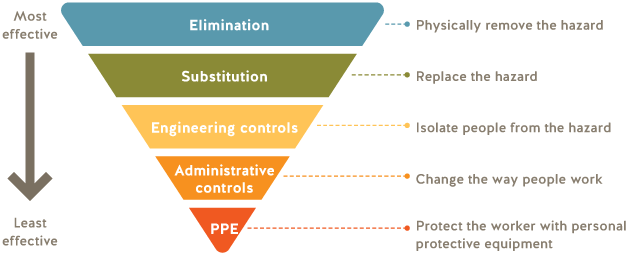Workers being struck by vehicles or mobile equipment is one of the leading causes of workplace serious and fatal injuries.
In the past 10 years, there were over 550 serious injuries and fatalities due to workers on foot being struck by vehicles or mobile equipment.
Understanding your responsibilities
Employers are responsible for managing the risk of struck-by incidents by taking three key steps:
- Identify tasks and areas where workers interact with mobile equipment.
- Assess the level of risk to workers.
- Implement effective controls to eliminate and reduce the risk.
To prevent struck-by incidents, it’s important to understand the factors that contribute to the risk, and how to apply effective controls to reduce that risk.
The hierarchy of controls ranks control options from most effective to least effective. The greatest risk should be addressed first. If you cannot eliminate a risk, you’ll need to implement other layers of controls to minimize the risk.
Additional steps you can take
- Create work areas that eliminate interactions between pedestrians and mobile equipment.
- Designate safe working and standing areas for workers.
- Install laser, radar, or ultrasonic sensors to stop mobile equipment when they sense a person.
- Provide education and training to workers on the risks of struck-by incidents and effective controls.
Preventing incidents is a shared responsibility
Working together, employers and workers can complete risk assessments and address health and safety concerns to help reduce the potential for struck-by incidents.
Resources
WorkSafeBC resources
- Layer risk controls to help prevent workers from being struck by mobile equipment (bulletin)
- Assessing risks — Mobile equipment (checklist)
- Reducing the risk of workers being struck by mobile equipment (information sheet)
- Part 16: Mobile equipment regulatory primer (regulatory amendment)
- Managing risk (webpage)
- Struck by mobile equipment (video)
- Pedestrian dies after being hit by recycling truck (hazard alert)
Information from other websites
- People aren’t pylons: Preventing vehicle collisions at work sites (Road Safety at Work)
- Reversing safely (Queensland Government)

